

16-week-long project with Science
Gallery Bengaluru to program a web game that prompted young adults to question human
needs
Exhibited in the PSYCHE exhibition, adjudged Best
Graduation Project at IIAD & part of the p5.js Global Showcase 2022
Self-directed
Shaunaq, Saibal, Shashi, Ramanujam, Madhushree & Vasudha
Every final semester student at the Indian Institute of Art & Design is expected to undertake an
independently driven 16 week long graduation project. This is meant to conclude their 4-year program, by
resulting in a substantial response to an individually defined design issue of interest.
During my
final semester at IIAD, I worked with the Science Gallery Bengaluru as part of their maiden
Xperimenters cohort to develop public engagement projects for young adults to interface with the sciences.
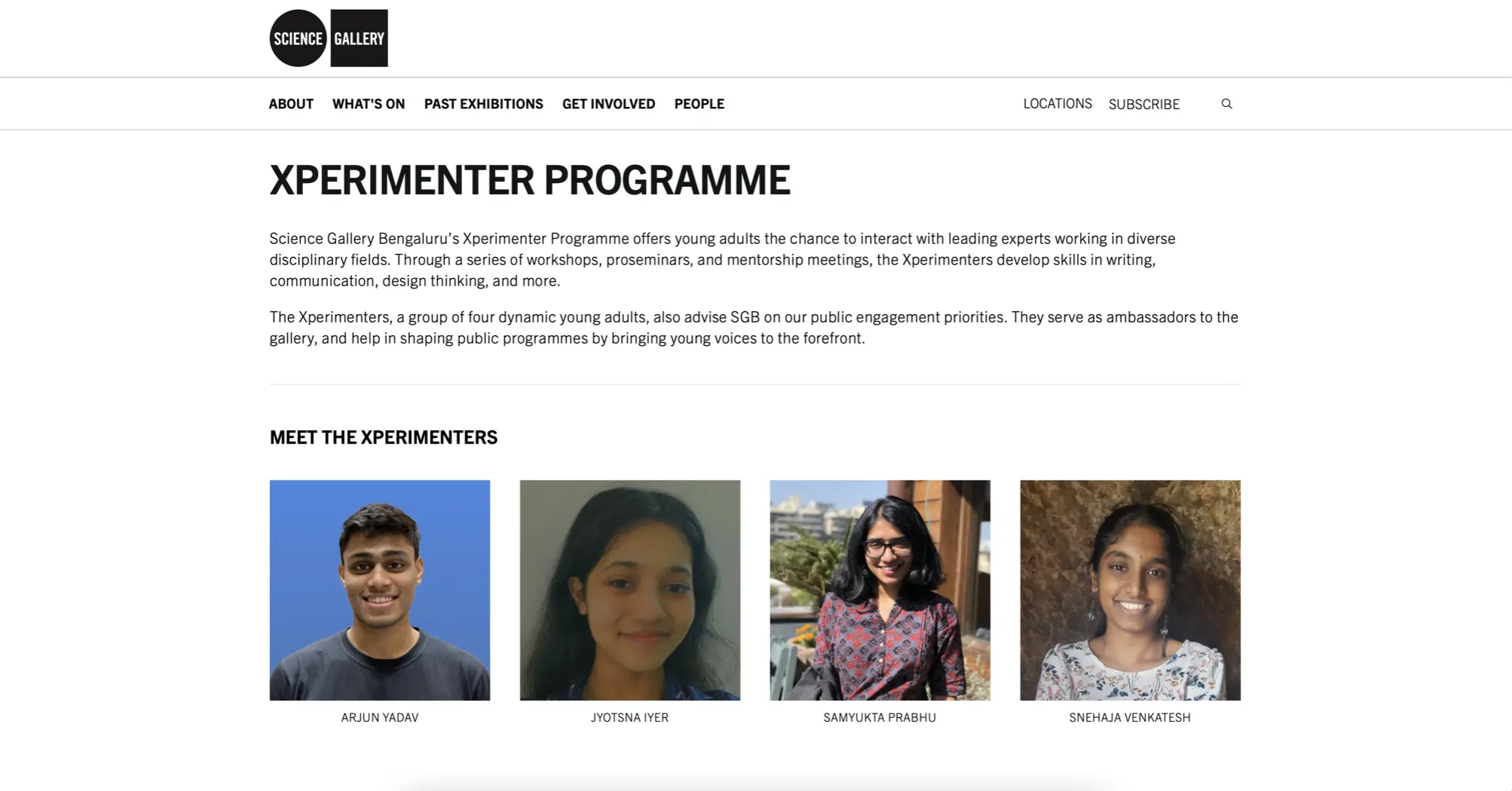
A screenshot of the Xperimenters page on Science Gallery Bengaluru's website in 2022.
One of the main projects during the 6-month long engagement was for each Xperimenter to independently
conceptualise, plan and execute a public engagement programme for PSYCHE: an online exhibition that explored
the human mind. This became my graduation project as well.
By mixing the requirements of the gallery
(to develop & run a public engagement project) and following an
end-to-end design process (academic requirement), I developed In Between Life & Death – a web-based game
that allowed players to progress through A.H. Maslow’s Hierarchy of Human Needs by controlling a digital
particle that suddenly wakes up with ‘life’. The making of the game, credibility of a theory of human needs
and the existence (or inexistence) of the grand purpose of life were further discussed in 2 virtual
workshops with 50+ young adults.
A 45 second long promotional video for the game. Unmute for sound.
You can play the game here, access my academic documentation or scroll below to read the case study.
During the Xperimenters programme, Jahnavi Phalkey broke down the meaning of science for us: one of the many
socially accepted systems of knowledge based on certain axioms (journal entry here
& here).
By considering science as simply a means to answer people’s questions, I decided to ask 12 Indian young
adults what they would like answers to.
A thematic clustering of 72 questions given by these young adults pointed towards a looming existential
theme: why do we do what we do and what is the point of it all?
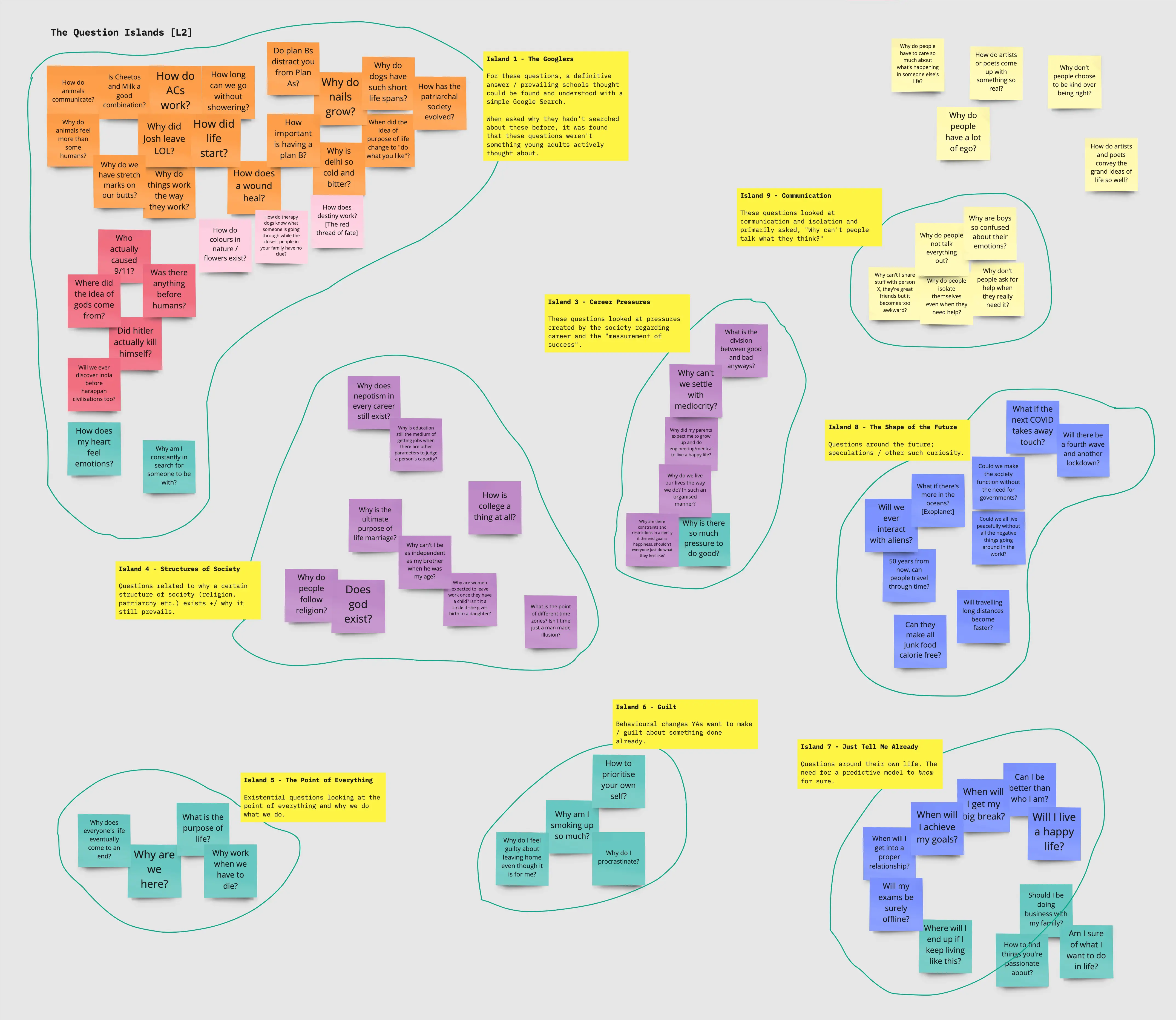
Grouping questions into 'islands' or common themes.
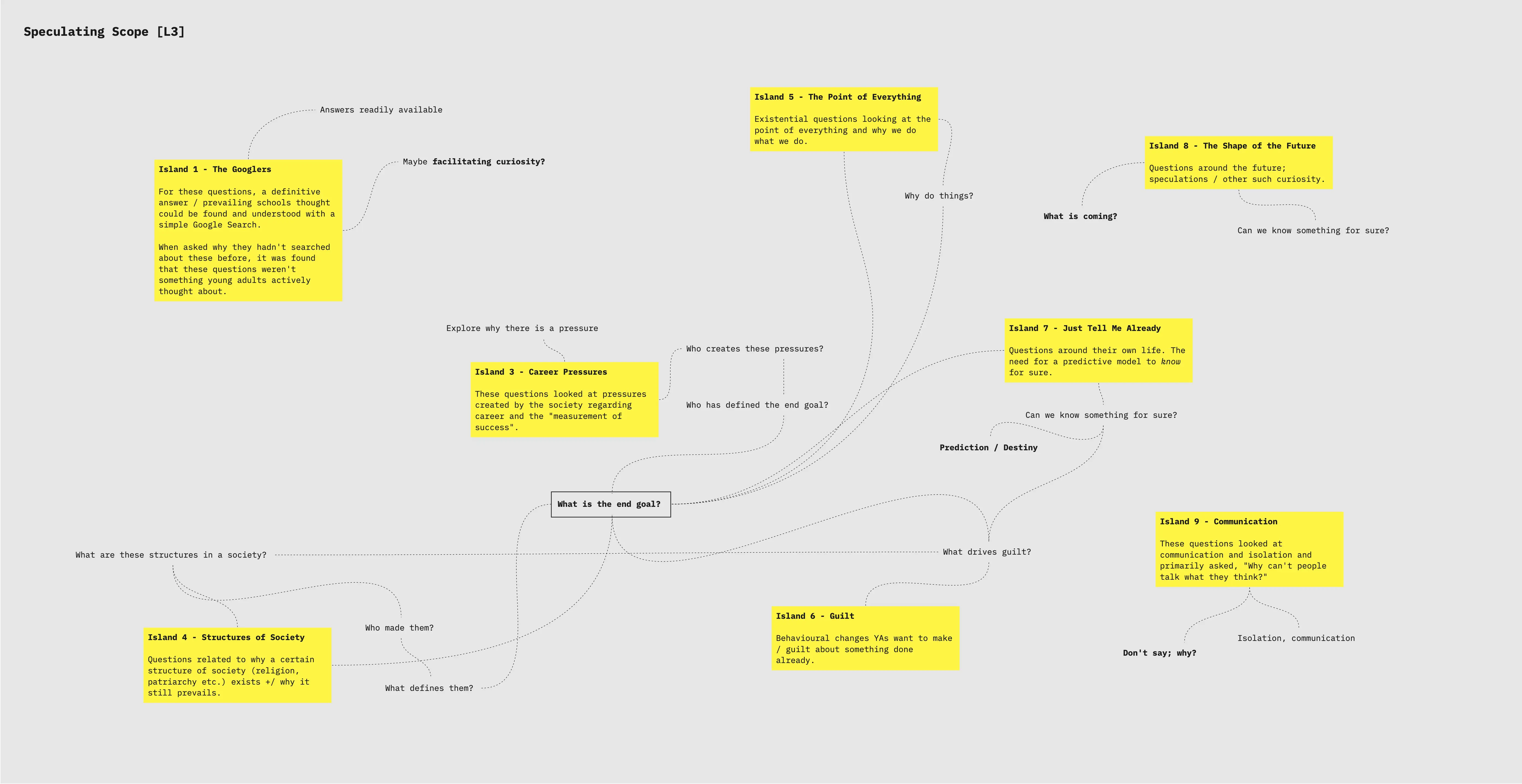
Many islands pointing towards the same existential theme: what is the end goal / purpose / meaning of it all?
I set out to try and bring about some sort of existential peace, by looking at answers to the same question in different branches of science: philosophy, neuroscience, psychology, biology, etc.
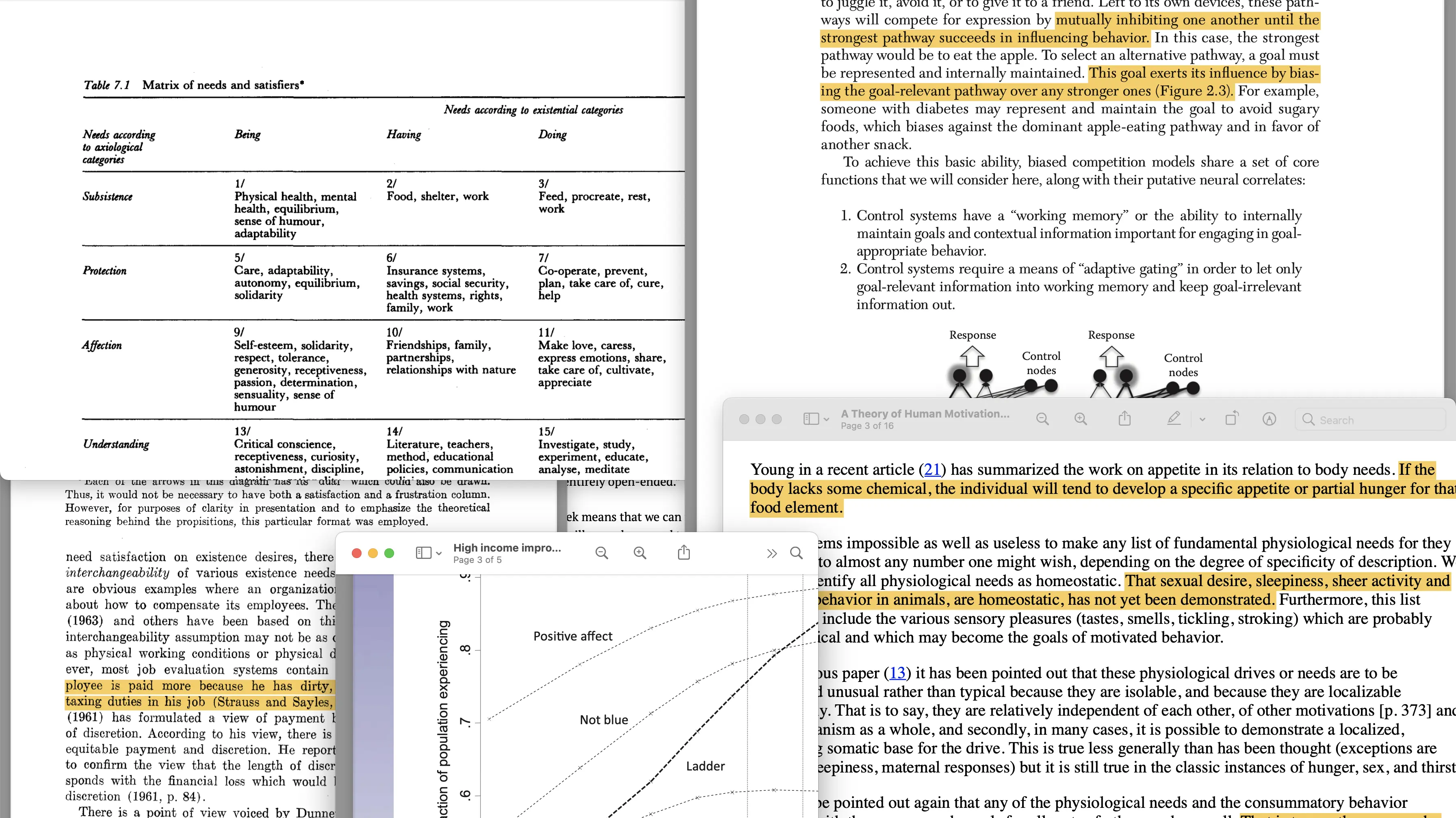
The same question, being explored through various lenses.
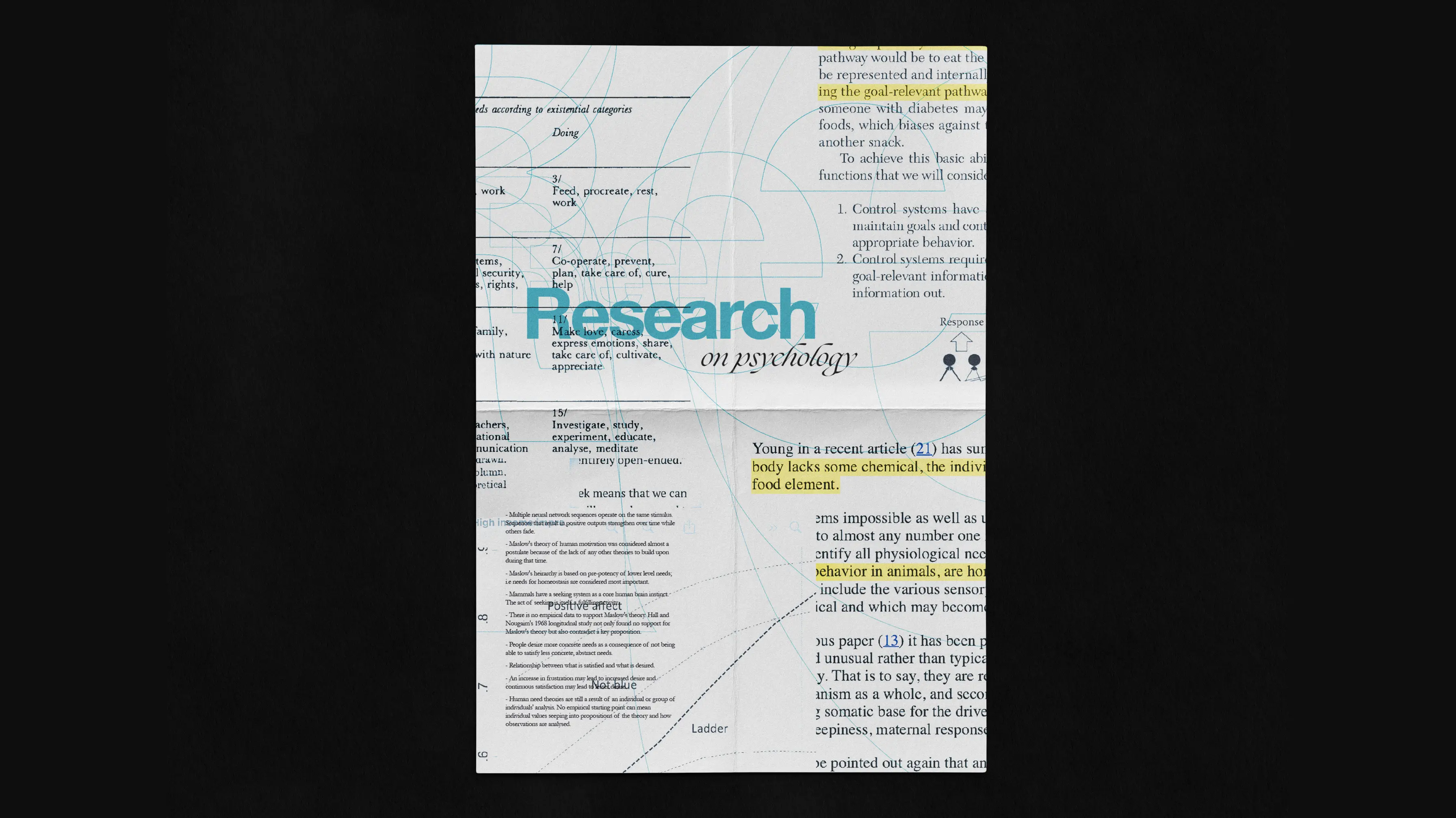
A collection of psychology research for the same question, organised typographically.
While doing this, I came to realise that human end-goals or ‘purposes’ are primarily subjective, largely
dependent on a person’s lived experience. However, a more fruitful & objective search would be to answer why
human beings think about an end-goal after all. This led me to a specific branch in human psychology: human
motivation, right from A.H Maslow in 1984 to the more recent Max-Neef in 2010.
Interestingly, my
research suggested that most human motivation theories after A Theory of Human Motivation (A.H. Maslow,
1984), were either extensions or refutations of the same. This made Maslow’s Hierarchy of Human
Needs a pioneering theory in the study of human motivation.
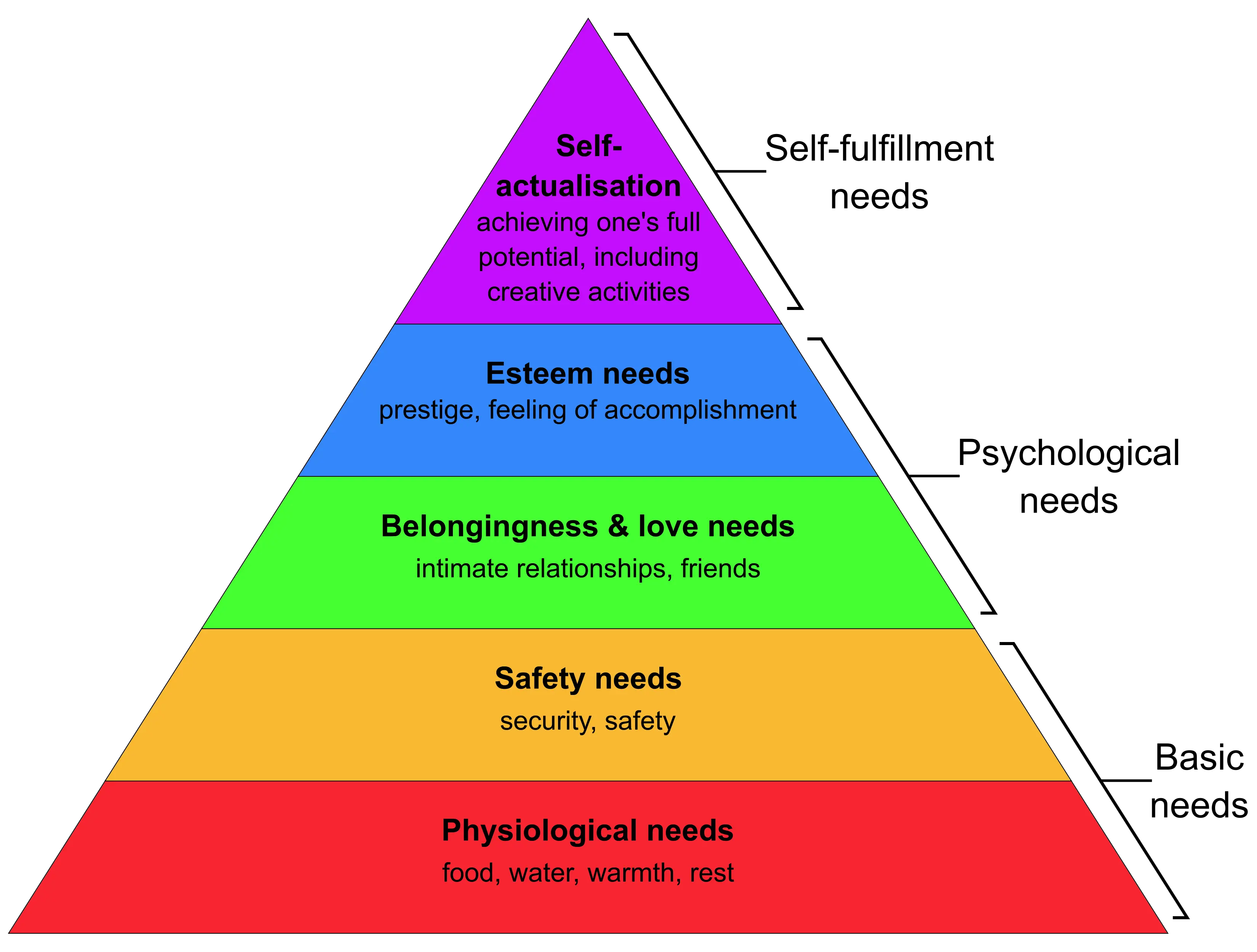
A diagram of the Maslow's Hierarchy of Human Needs. Source: WikiCommons.
When I looked at the hierarchy, a certain resemblance to video games could be seen. Pass the conditions of one level (or hierarchy) to reach the next one, with the promise of increased rewards, but with more effort required to get them each time. I loved that human life could be broken down into such a bare system of input (effort) & output (satisfaction), all to reach the last stage: self-actualisation (making the most out of one’s creative potential by doing everything that they are most fitted to do).
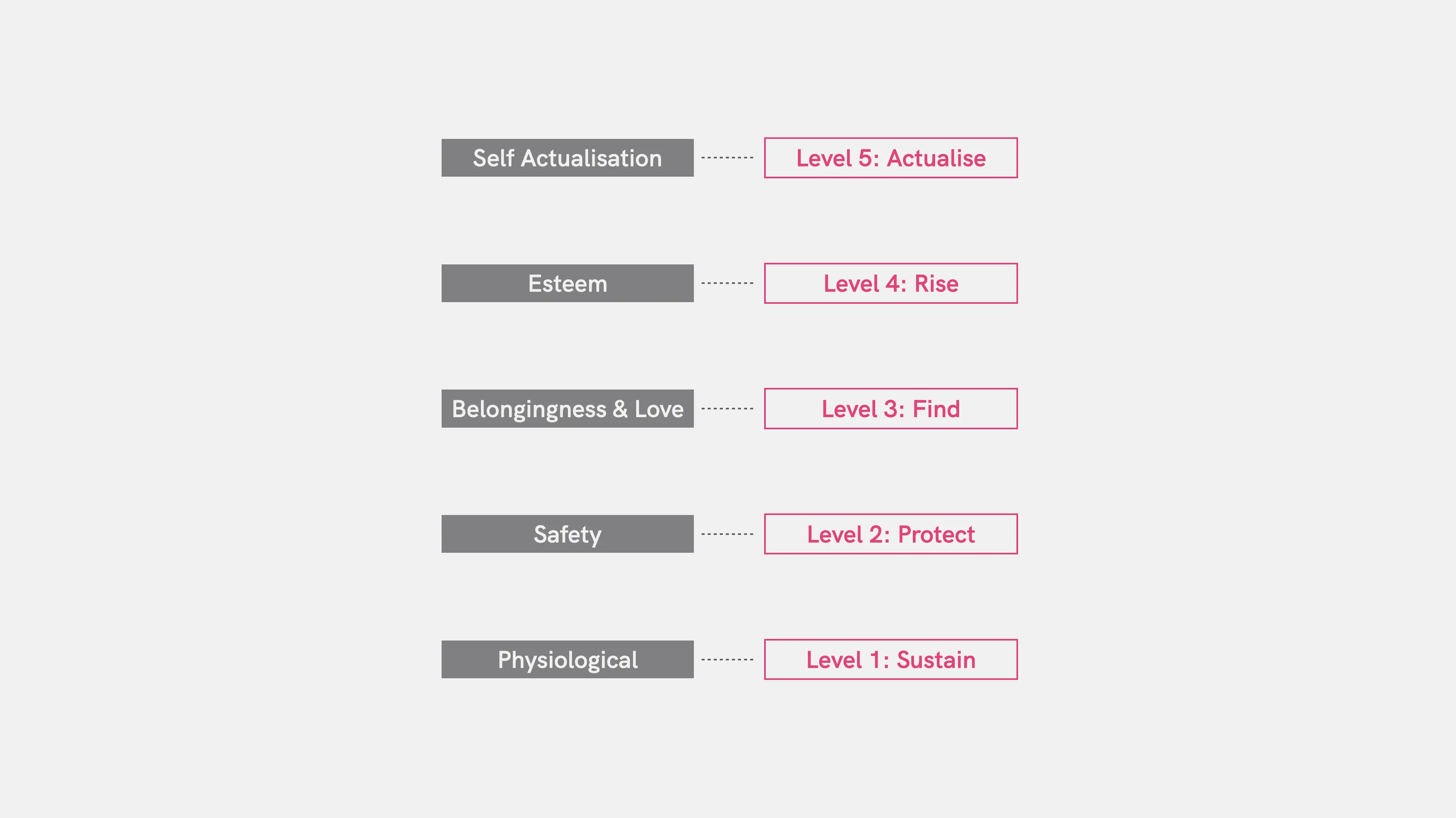
Interpreting each hierarchy as a 'level' for a video game.
This last hierarchy was the most interesting one of them all because of its inescapability. No breathing
human can ever truly self actualise, for there is never a limit to creative fulfilment. Yet, Maslow believed
that human beings live all their lives to try and fulfil the requirements of this hierarchy, which is
arguably a futile effort.
My interpretation for this need was that this never be fulfilled and,
therefore, can be seen as an escapable
level (or hierarchy). There is nothing that exists beyond it because there is no limit for creative
fulfilment. One can always do more. This sat well with an ending for my game (as well as for human life),
people trying to self-actualise but never actually being able to, until death strikes them randomly one day.
All the code can be found here.
The game had 5 stages for a digital particle to progress through. Players woke up as a digital particle
(suddenly being given ‘life’) in a dark space. Movement of the particle was controlled through the p5.js
lerp() function. Move the mouse somewhere, and the
particle slowly moves there.
heroPosition = lerp(initialPosition, newPosition, amountOfInterpolation);
The first stage (or level) was physiological needs. This was interpreted as simply regaining the energy that the particle expends by breathing & moving. Food was created at different intervals of time, and the particle must be moved close to the food source for it to eat the food (much like the real world).
class Food {
objectProperties{
size, colour, position
}
eatenStatus{
if (eaten==true){
foodDoesNotExist();
}else {
foodExists();
}
}
Next was the stage of safety. Hostile particles flew in from random places at random speeds and a collision detection algorithm was used to recognise whether the hero particle successfully steered away from them or not. If not, the particle would die.
d = distance between heroObject and hostile particle [i]
if (d
heroObject dies
}else {
heroObject survives
}
The next stage was a complicated one to fit into a system of logic: belonging & need. I interpreted love (at the time) as companionship. In the lonely space, another similar looking particle appears and the hero particle must move in at a desirable speed to ‘connect’ with the other particle (used velocity to program ‘consent’).
//Free moving companion object
if (companionObject.x<0 | companionObject.x> width) companionObject.xSpeed =
companionObject.xSpeed * (-1)
if (companionObject.y<0 | companionObject.y> height) companionObject.ySpeed =
companionObject.ySpeed * (-1)
//Calculating whether the heroObject is moving towards the companion or not
detectMouse(){
if (mouseX < companion.x + companion.r/2 + leeway)&
(mouseX > companion.x - companion.r / 2 - leeway) &
(mouseY < companion.y + companion.r / 2 + leeway) &
(mouseY > companion.y - companion.r / 2 - leeway){
mouseOnTarget = true;
} else {
mouseOnTarget = false;
}
}
If a player made it till this point in the game, they had progressed through the Hierarchy of Human Needs in a linear fashion, one after the other. However, life is rarely like that. I programmed a shortage of food and the arrival of more hostile particles at this juncture. Once conditions were stable again, the hero particle was suddenly zoomed out into the grander universe where other similar particles existed. The hero particle now had to connect with the others (make friends) and take care of them (fulfilling esteem needs). At this point, the game became an autonomous system (friends moved independently, ate food and could also die from starvation).
for (let i =0; i
for (let j = 0; j
if (food[j].contains(friendPosition[i])){
friend[j].radius = friend[j].radius + food[i].radius;
food.remove (i);
} } }
Finally, the hero particle reaches the level where it can self-actualise. After all, that’s what it’s been about, reaching this stage where the grand question of life can be answered and it can finally see what’s on the other side. However, at this stage, an algorithm (death) kicks in which has a 70% chance of the particle dying unexpectedly every frame (60 times in a second on most computer screens).

A screenshot from the end of the game. It displays the total number of seconds for which a player was alive and gives you an option to restart (or to be reborn again).
The game was played by a total of 121 unique people in the first month of its launch. Through the virtual workshops, 49 young adults questioned human needs, happiness and the purpose of life. Here are some things they said in my workshops:
“The experience of the game felt meditative and brought about a rather primal human desire from within me.”
“I later realised that we don’t have to eat all the food available and I was able to survive for longer. Interesting how this correlates with the concept of greed.”
“Love how the game has been able to start very different conversations!”
“Learning to code really does empower you in more ways than one.”
“Coding does not seem to be as hard as I thought it would be.”
The founding director of the gallery said:
“It’s not the numbers but the quality of engagement that matters. Impact one person’s life, but do it well.”